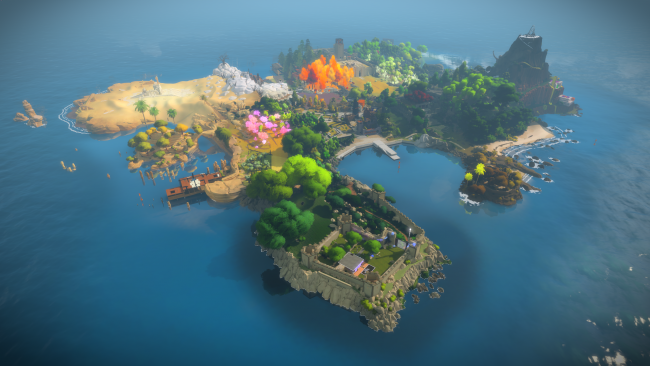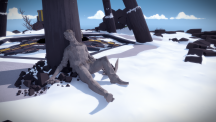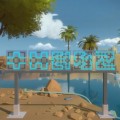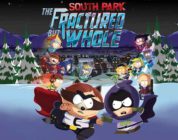We have tried many puzzle games over the years, and the best all have one thing in common. They make us think about them even when we’re not playing. Be it to see how the furniture in the living room can be organised Tetris-style, how we can use portals to teleport us to the other side of the office, or get us to inhospitable areas using a change of perspective. The Witness got us to draw mazes to help us solve puzzles. But how does it compare to other greats of the genre?
The screens do not lie. Almost from the start you’re surrounded by bright colours. The island is in fact divided into different areas, and everyone has their own colours or architecture. It’s incredibly liberating to not have any information on the screen at any time (HUD), but instead immerse fully without any form of interference.
The sound design is also “natural” that way, but it did not succeed to the same extent. All you hear is wind, footsteps, waves and the sounds of different machines. This becomes extremely boring after a while, especially those times when you’re stuck on one of the tasks. We understand that they had to do it this way since a few puzzles must be solved via audio clues, but it would have been fine with a little music. We also noticed some pop-ins, but it happened so rarely that it’s not a big minus.
You experience the game from first-person perspective, and solve two dimensional puzzles by drawing lines from one end of a in-game screen to another. We’re not talking about simple mazes. Each screen features one particular solution. To find it you have to either take account of certain elements on the screen, or find clues in the environment around you. It is very hard to give examples without spoiling anything so we’ll try to be brief about it. In one of the ten areas you need to, for example, draw a line without bumping into the shadows falling on the screen. In another you must separate certain symbols on the screen. Each area exercises different parts of the brain.
We are talking about an “open world” IQ test, training for the brain. If don’t enjoy that sort of thing you should stay far away The Witness, and vice versa if you are inclined to test your mental aptitude. At the beginning of each area you get some very light puzzles that are meant to give you hints about what the area’s mechanics are, then the difficulty level is increased for each screen you find. The sense of progression is near perfect. In some cases we noticed how we had to think about each puzzle for about ten seconds longer for every screen we found. Until we got stuck, that is.


Make no mistake, you will get stuck. The second night we were playing, we walked around for over two hours without finding a puzzle we were able to solve. At this point in time we considered bashing the game for not providing enough hints, but then we worked out that on the most challenging screens you must combine the different mechanics that you have learned in the other areas. When we first heard that the game would let us move around freely on the island, we thought that this was only to offer us something else to do, but once we worked out how the more complicated puzzles worked, we understood why. All areas can to some extent be seen in connection with each others, and by solving an area you might get some ideas about how another area can be cracked. It’s an absolutely stunning example of game design.
This connectivity is, however, also a small negative. For after dozens of hours of drawing these lines it starts to feel a bit repetitive. To complete over 400 puzzles with such simple mechanics will of course be boring for many, and it is this element that will make for polarising opinions about the game. We were very impressed with the variety they have managed to create by just being able to move and use one button to interact with the puzzle screens, but we can see why some people will put the game down pretty quickly.
This is a game dedicated to puzzles. There are a lot of secrets and audio recordings to find, but almost all are either dedications or quotes from famous people. Many of them are also very symbolic, and we’ll happilly admit that some of them went over our heads. So even if you get an understanding of what you have been through when the credits appear, you should steer clear of this one if you’re looking for a good story. The purpose of the game is to get the player to ponder some pretty deep themes, and Blow and his team have therefore chosen to focus on more inspiring details that allow for interpretation.
The Witness is the Bloodborne of puzzle games. The games are both beautiful, and they have a high level of challenge while still being fair. In both games, you will most likely get stuck at some point, but if you get past it, you’re rewarded with a wonderful experience and a sense of accomplishment. Despite dropping us one what’s a relatively small island, the game offers a whole bunch of puzzles. To finally understand the solution to one after solving others is a wonderful feeling, and once you understand how they all fit together you can suddenly solve several in a row. You start filling up your own personal contentment meter, and just when it’s reaching full, the game throws you a new challenge. Then you’re sent out to explore the exciting surroundings in order to find another connection between the different areas.
Despite the lack of music and occasionally repetitive gameplay, Blow and his crew have created a new masterpiece. The Witness has some excellent puzzle design and the feeling of progression is going to be a source of inspiration for many a game in the future.






